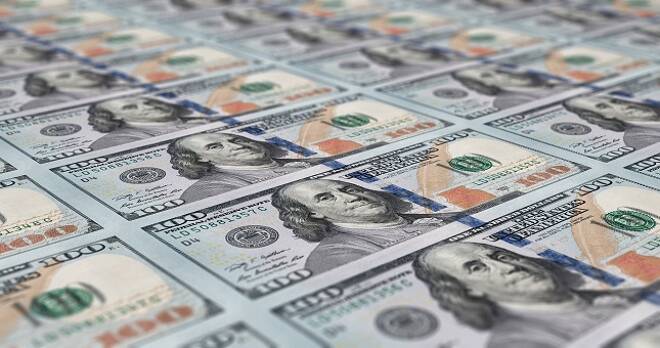Advertisement
Advertisement
Trump’s Support for Dollar Fails to Scare the Bears
By:
The dollar closed lower against a basket of currencies for the seventh straight week and is now down 3.20% for the year.
The U.S. Dollar took a beating last week in reaction to negative comments from a high-ranking U.S. government official. This news fueled volatile rallies across the board in the major currencies. The dollar closed lower against a basket of currencies for the seventh straight week and is now down 3.20% for the year.
March U.S. Dollar Index futures settled at 88.891, down 0.336 or -0.38%.
The aggressive selling was fueled by Treasury Secretary Steven Mnuchin who said a weaker greenback would help U.S. trade balances in the short-term. President Trump tried to put a lid on volatility and keep dollar bears in check when he told CNBC that he wanted a “strong dollar,” however, this wasn’t enough to stop the price slide.
There were only two major economic reports last week. U.S. fourth-quarter gross domestic product increased at a 2.6 percent annual rate, held back by a modest pace of inventory accumulation. Economists had forecast a 3 percent increase.
The Commerce Department said on Friday that orders for long-lasting manufactured goods rose 2.9 percent in December, the fastest pace since June and another sign of strength for American industry. Economists had forecast a gain of 0.9%. The previous forecast was revised higher to 1.7%.
Core Durable Goods Orders rose 0.6%, beating the estimate of 0.5%. The previous month was revised upward to 0.3%.
Japanese Yen
Last week, the Bank of Japan held its monetary policy steady, voting to maintain the short-term interest rate at minus 0.1 percent and the target for the 10-year government bond yield at zero percent.
In an outlook report accompanying the latest monetary policy statement, the BOJ said it is maintaining its forecast for inflation to hit 2 percent in the fiscal year 2019/2020. But it now expects core consumer prices to grow 0.8 percent in the fiscal year 2017/2018, lower than the previous projection of 1.1 percent.
Consumer prices are expected to be up by 1.8 percent in fiscal year 2018/2019, unchanged from the previous forecast, the BOJ added.
On Friday, the dollar slipped to its low for the week against the Japanese Yen after Bank of Japan Governor Haruhiko Kuroda said the central bank expects the economy to continue growing at a moderate pace and inflationary expectations are picking up slightly.
New Zealand Dollar
The New Zealand Dollar finished the week sharply higher despite some strong mid-week volatility, triggered by weaker-than-expected quarterly inflation data.
Last week, the New Zealand government reported that growth in New Zealand’s consumer prices unexpectedly slowed in the final quarter of 2017 as a sharp drop in the price of retail goods outweighed the effect of more expensive gasoline and air fares.
The consumer price index increased 0.1% from the previous quarter and 1.6% from a year earlier, Statistics New Zealand said Thursday, following a 0.5% rebound in the third quarter that brought the annual gain to 1.9% on year.
Economists were looking for a 0.4% increase from the previous quarter, and remain steady at 1.9% compared with the previous year.
About the Author
James Hyerczykauthor
James Hyerczyk is a U.S. based seasoned technical analyst and educator with over 40 years of experience in market analysis and trading, specializing in chart patterns and price movement. He is the author of two books on technical analysis and has a background in both futures and stock markets.
Advertisement
